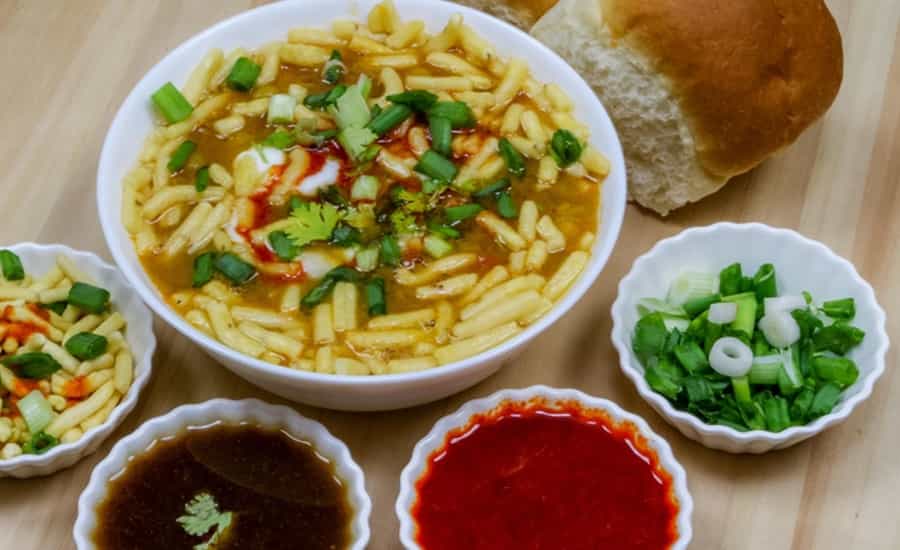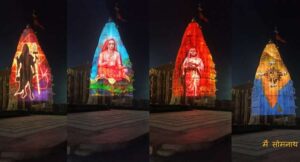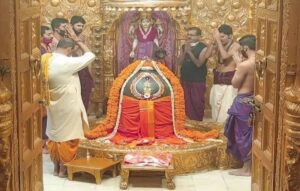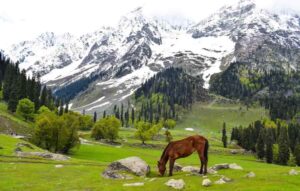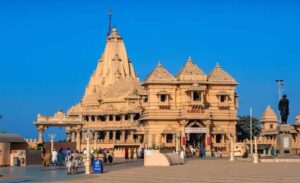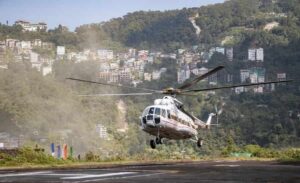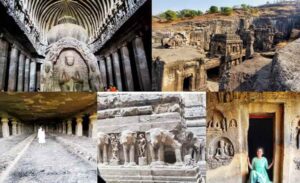Popular Folk Dance of Gujarat
Gujarat, a western state in India, is renowned for its rich cultural heritage and traditions. The state is a treasure trove of diverse art forms, music, and dance, with folk dances holding a special place in the hearts of its people. In this article, we will delve into the world of Gujarat’s popular folk dances, exploring their origins, unique features, and their significance in the state’s cultural tapestry.
Garba
- Performed during Navratri festival.
- Circular formations and rhythmic claps.
- Symbolizes worship of goddess Amba.
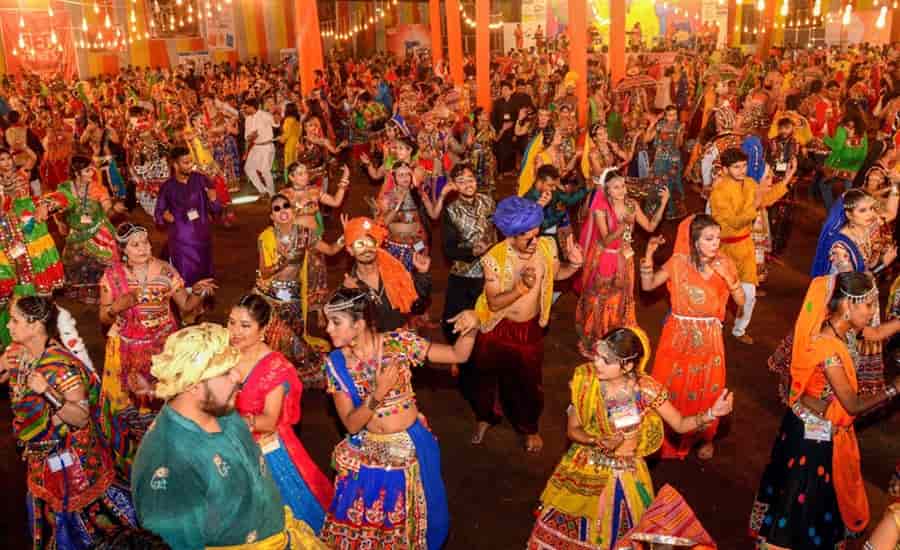
Garba, originating from Gujarat, is an iconic dance rooted in tradition and mythology. Performed during the nine nights of Navratri, it symbolizes the worship of the goddess Amba. The circular formations and rhythmic claps of Garba symbolize the eternal journey of the soul. Dancers dressed in vibrant attire, often adorned with intricate mirror work and embroidery, showcase graceful movements and intricate footwork. This dance isn’t just an artistic expression but a cultural phenomenon that has transcended borders, with people worldwide participating in Garba events during Navratri, making it a globally celebrated dance form.
Raas
- Partner dance with dandiya sticks.
- Recreates playful interactions of Lord Krishna and Gopis.
- Celebrates love and devotion.
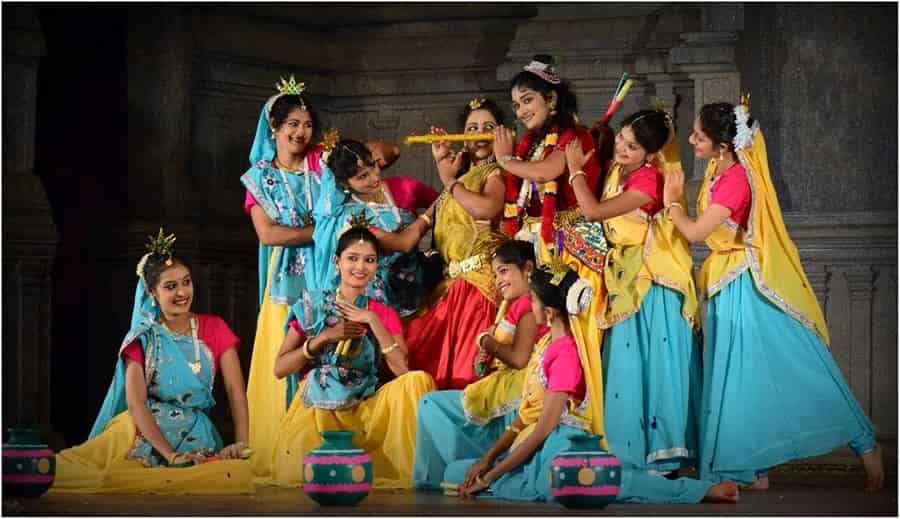
Raas is intrinsically tied to the playful interactions between Lord Krishna and the Gopis, making it an essential part of Navratri celebrations. Dancers form pairs and use Dandiya sticks to create rhythmic patterns, resulting in an electrifying performance. The music and energetic footwork evoke the spirit of devotion and unity. Raas isn’t just a dance; it’s a cultural tradition that brings people together, reinforcing the bonds of community and spirituality. It has evolved over time, adapting to contemporary sensibilities while maintaining its deep-rooted cultural significance.
Bhavai
- Folk theater combining dance, drama, and music.
- Performers balance pots on their heads.
- Reflects bravery and storytelling.
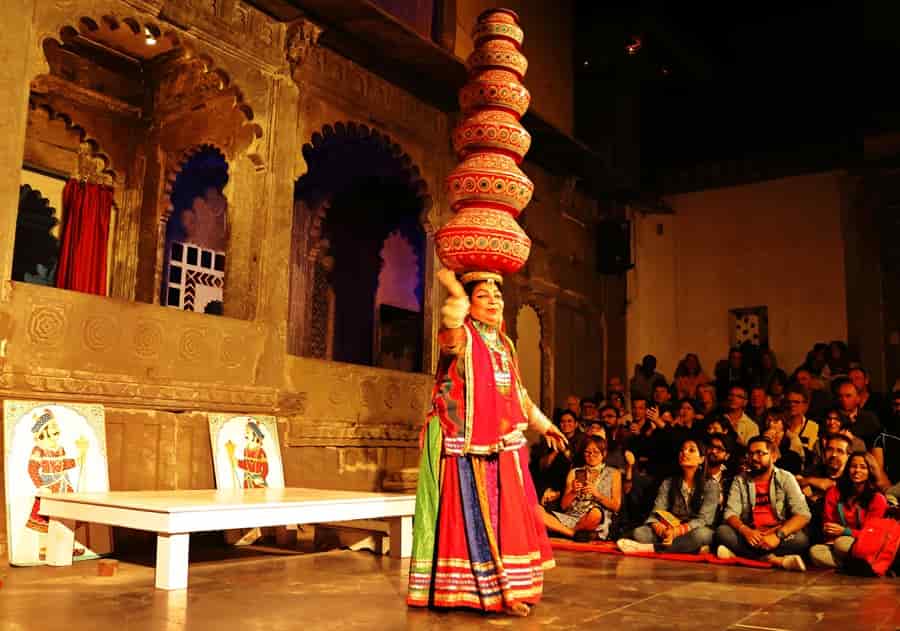
Bhavai is a multifaceted folk theater art that blends dance, drama, and music. Originating in rural Gujarat, it serves as a repository of traditional stories, including those of bravery and valor. The most remarkable aspect of Bhavai is the ability of performers, often from the Kutch region, to balance multiple earthen pots on their heads while executing agile dance movements. This extraordinary feat is an embodiment of grace and skill, signifying the importance of balance in the face of life’s challenges. Bhavai has maintained its cultural significance and continues to be an emblem of storytelling and artistic expression in Gujarat.
Ghoomar
- The connection of Ghoomar to Gujarat.
- Steps and techniques of the Ghoomar dance.
- Celebrating festivals with Ghoomar.
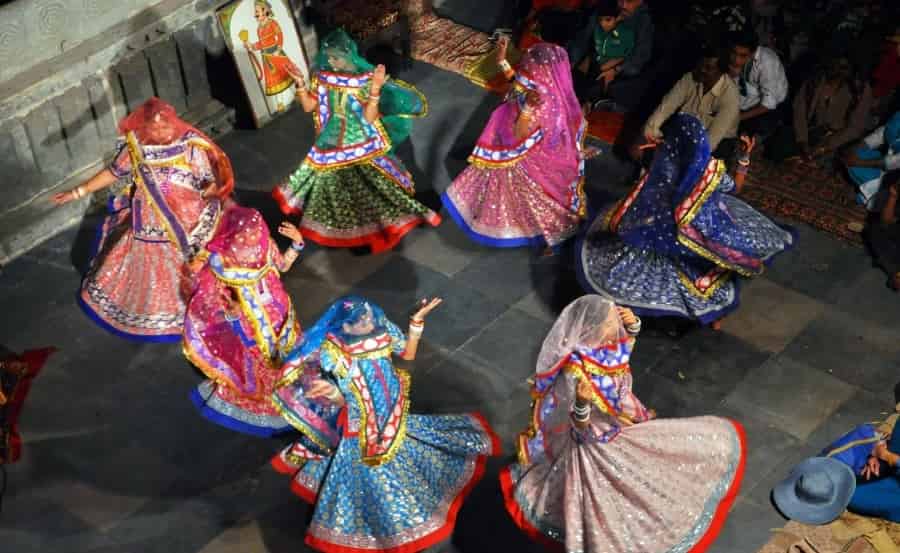
Though originally hailing from Rajasthan, Ghoomar has been embraced in Gujarat with great enthusiasm. It is a graceful dance form characterized by women twirling in vibrant Ghagras (long skirts) that create mesmerizing patterns on the floor. The swirling movements and the elegance of Ghoomar symbolize the feminine spirit, making it a favorite choice at cultural events, weddings, and other festivities. Ghoomar is not just a dance; it’s a cultural celebration that showcases the beauty and grace of Rajasthani and Gujarati traditions.
Dandiya Raas
- Energetic version of Raas.
- Dancers use dandiya sticks.
- Symbolizes unity and joy during Navratri.
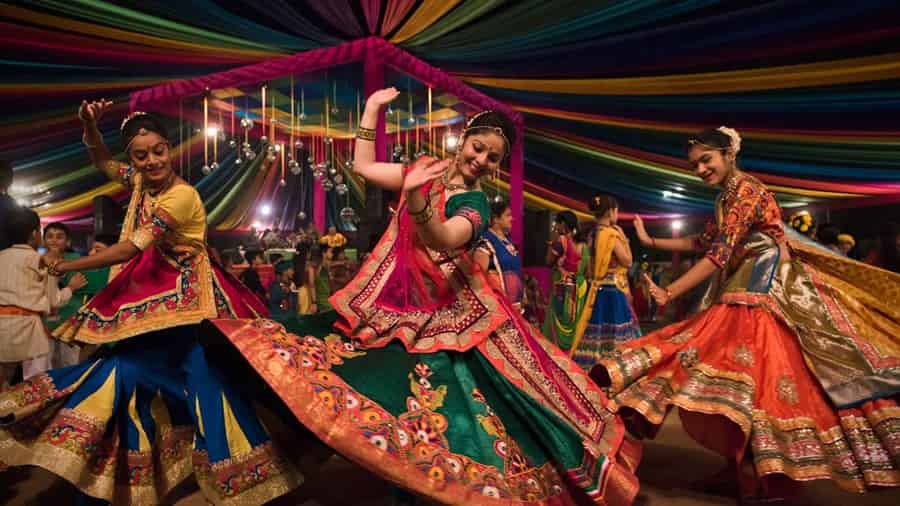
Dandiya Raas is a more dynamic and exhilarating adaptation of the traditional Raas dance. It forms an integral part of Navratri celebrations, characterized by enthusiastic participation, intricate footwork, and the rhythmic striking of dandiya sticks. The sticks themselves are often beautifully decorated and add a dynamic element to the dance. Dandiya Raas symbolizes unity, as individuals come together to create mesmerizing patterns, and it exemplifies the vivacious and joyful spirit of Navratri. It’s not just a dance but an embodiment of the festive atmosphere during the Navratri season, showcasing the love, devotion, and energy of the community.
Tippani Dance
- Performed during Holi.
- Features spirited and colorful movements.
- Celebrates the arrival of spring.
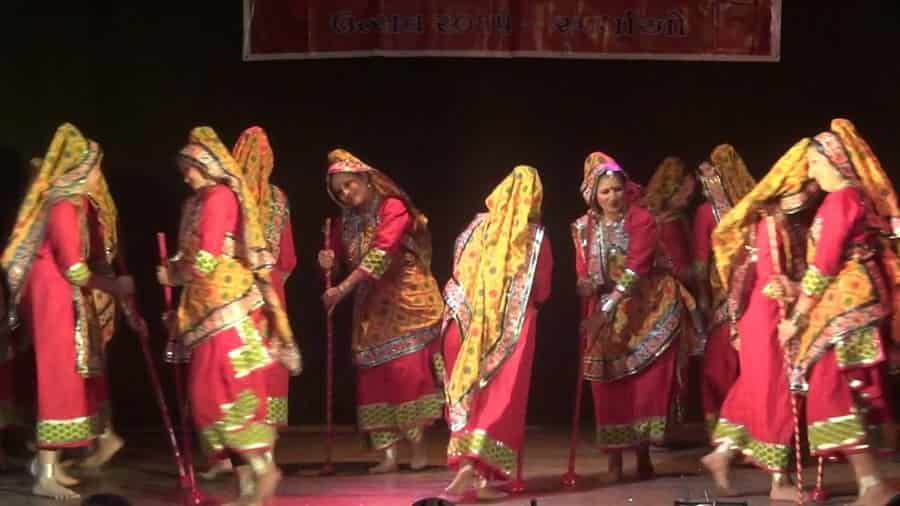
Tippani Dance is a spirited and colorful form of dance performed during Holi, the joyous festival of colors. Dancers move energetically, engaging in spirited movements, often throwing colored water on each other. The colorful splashes symbolize the arrival of spring and the victory of good over evil. Tippani Dance is an exuberant and unifying celebration of life’s renewal and the triumph of positivity over adversity.
Padhar Dance
- Community dance in a circle.
- Rhythmic clapping to traditional music.
- Fosters unity and togetherness.
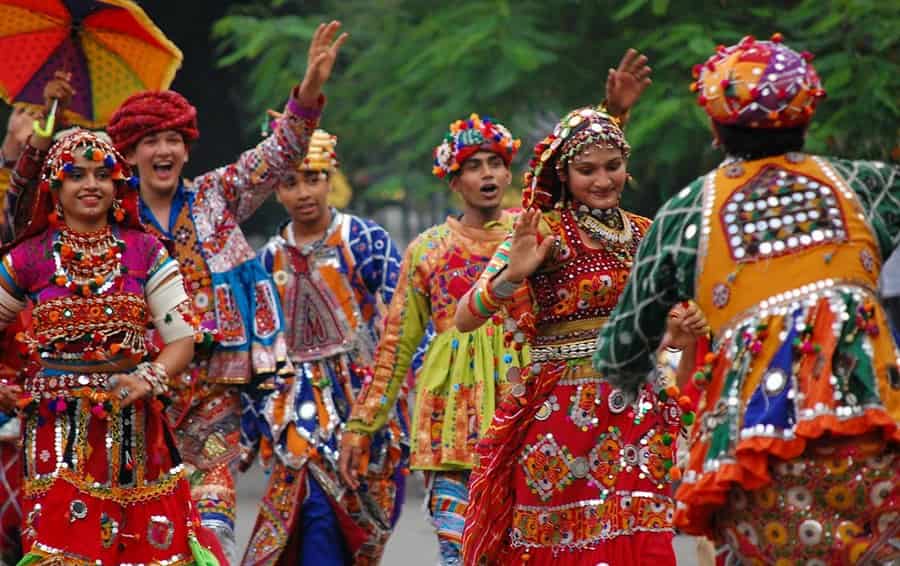
Padhar Dance is a communal dance that brings people together in a circle. Participants clap rhythmically to the beat of traditional music, fostering a sense of unity and togetherness during various cultural events and gatherings. The dance is a testament to the communal spirit, where individuals come together to celebrate shared traditions and to create a strong sense of belonging.
Hinch Dance
- Performed by women during weddings.
- Balancing pots filled with buttermilk.
- Symbolizes grace and skill in celebration.
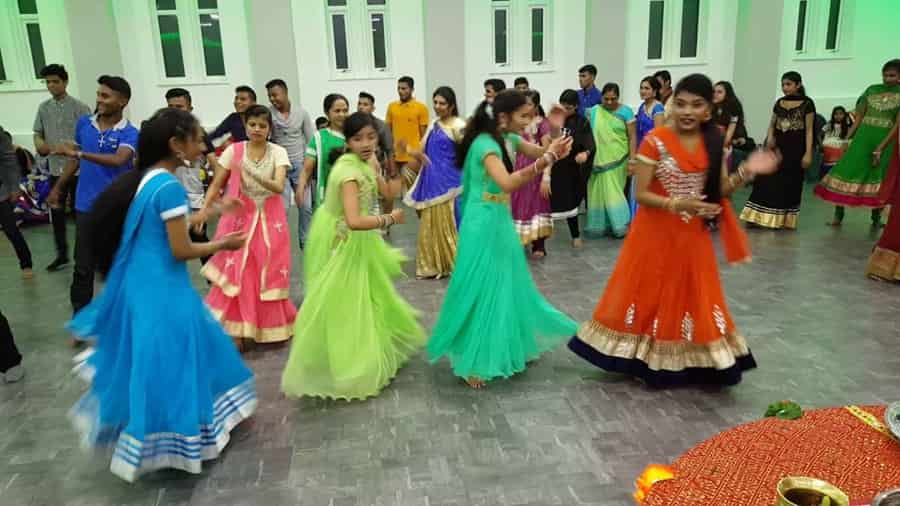
Hinch Dance is an exceptional dance, particularly performed by women during weddings and other celebratory events. It is visually stunning, as women gracefully balance pots filled with buttermilk on their heads while dancing. This demanding feat, combined with synchronized dance steps, symbolizes the ability to celebrate life’s pivotal moments with grace and skill, making it an essential part of Gujarati wedding ceremonies.
Dangi Dance
- Tribal dance from the Dang region.
- Features traditional instruments and footwork.
- Narrates stories of tribal life.
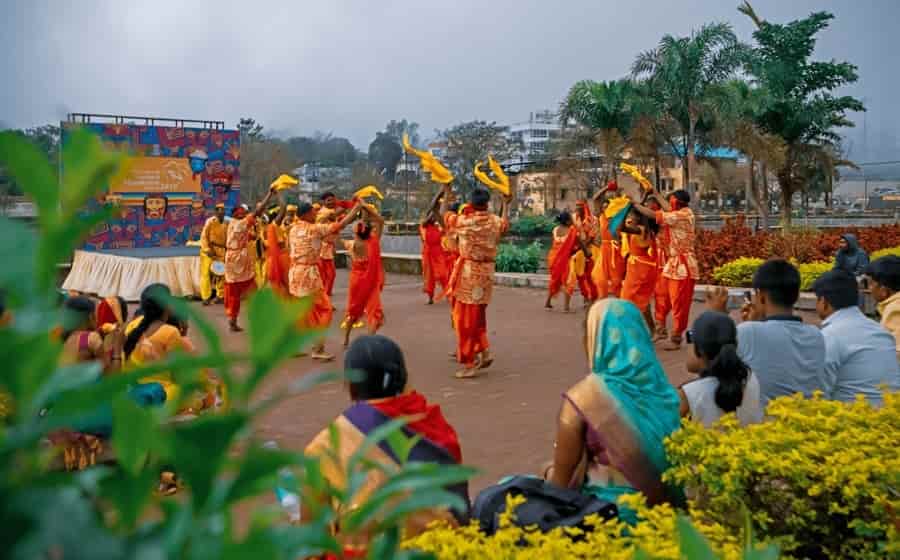
Dangi Dance is a tribal dance form originating from the Dang region of Gujarat. Dangi dancers showcase their cultural identity through traditional musical instruments and intricate footwork. The dance often narrates stories of tribal life and heritage, and it’s a reflection of the Dangi community’s rich traditions.
Gher Dance
- Tribal dance by the Bhil community.
- Swift footwork and storytelling.
- Celebrates cultural heritage.
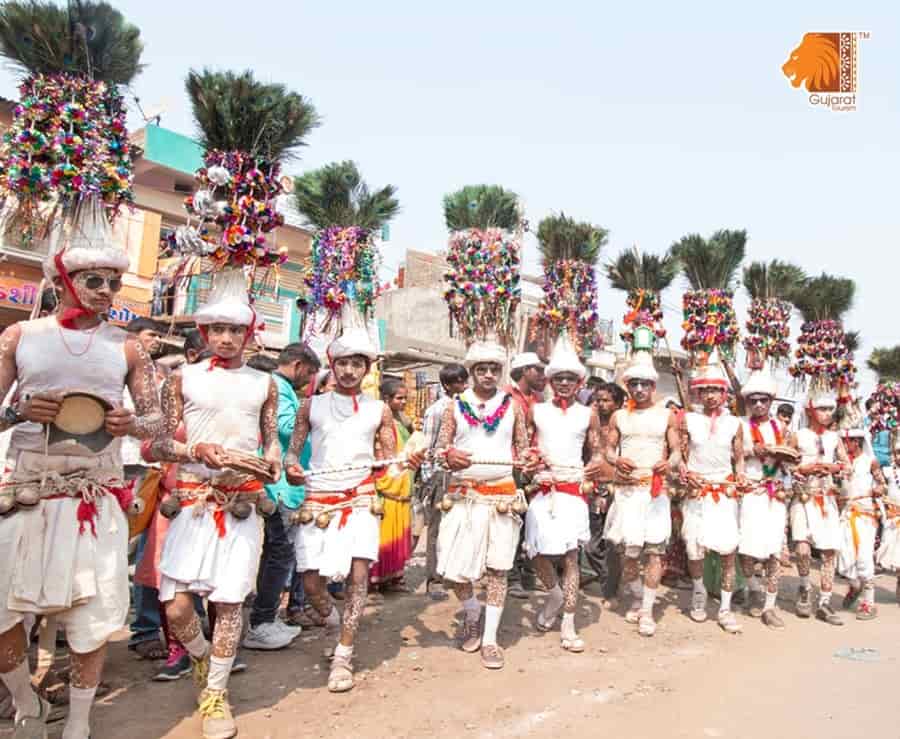
Gher Dance is a tribal dance form performed by the Bhil community, known for its swift footwork and storytelling through dance movements. The dance serves as an expression of the Bhil community’s rich cultural heritage and traditions, fostering a sense of unity and cultural pride.
Tribal Dances
- Various dance forms across tribal communities.
- Reflect indigenous culture and traditions.
- Celebrated during tribal festivals.
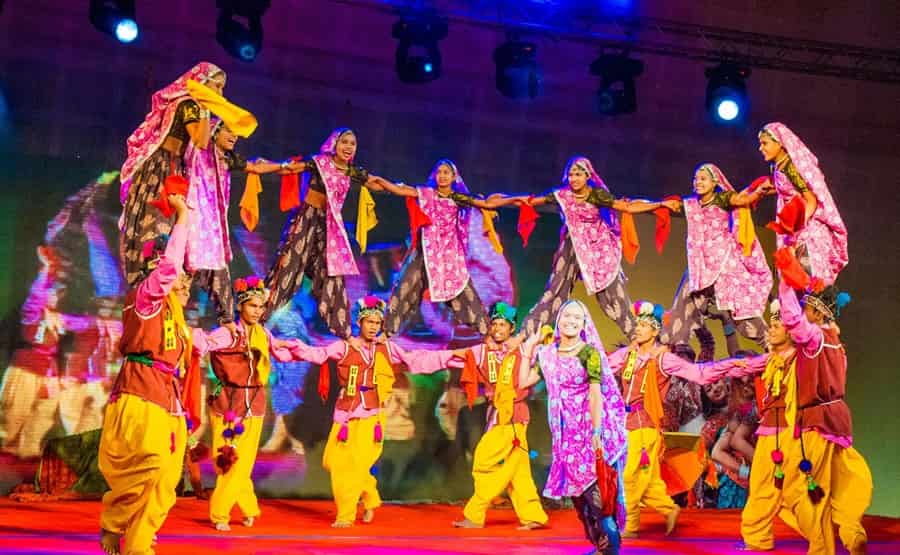
Gujarat is home to several tribal communities, each with its unique dance forms. Siddi Dhamal, Rathwa Naach, and Gamit Naach, among others, are performed during tribal festivals and gatherings. These dances not only celebrate their heritage but also help preserve the cultural diversity of the state.
Matuki Dance
- Folk dance from Saurashtra.
- Women in a circle with traditional instruments.
- Celebrates rural life and gatherings.
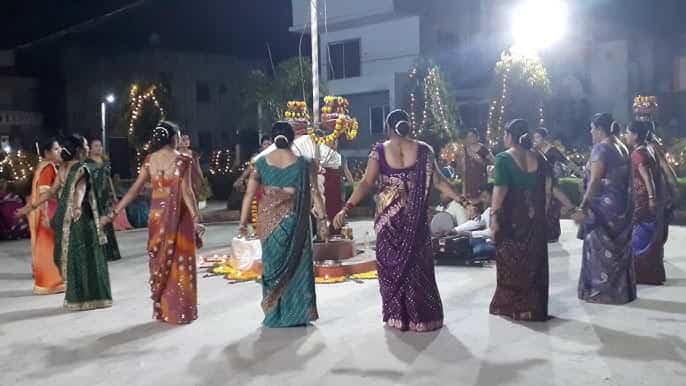
Matuki Dance is a folk dance originating from the Saurashtra region. Women form a circle and dance to the beats of traditional instruments, celebrating rural life and the importance of communal gatherings and festivities. The dance is a testament to the traditional way of life in Gujarat’s rural communities.
Tera Tali Dance
- Women sit and use cymbals for rhythms.
- Often performed during religious ceremonies.
- Symbolizes devotion and spirituality.
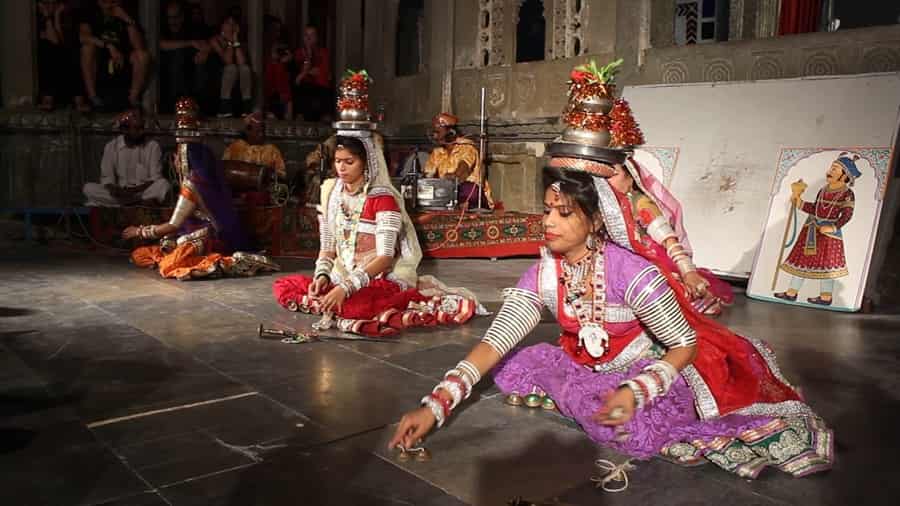
Tera Tali Dance is a unique form where women sit on the ground and use cymbals to create rhythmic patterns. Often performed during religious ceremonies, the dance symbolizes devotion and spiritual celebration. The intricate coordination of cymbal movements adds a layer of complexity to the dance.
Sidi Goma Dance
- Dance of the Siddi community.
- Combines African and Indian influences.
- Vibrant costumes and rhythmic movements.
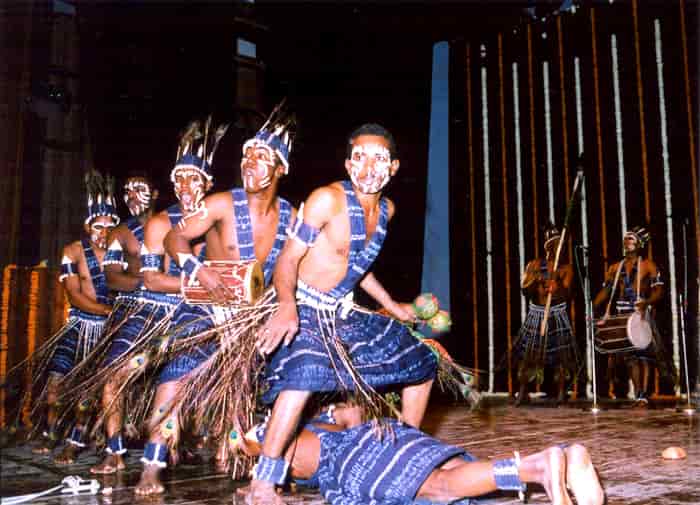
Sidi Goma is a dance form of the Siddi community, descendants of African slaves. Combining African and Indian influences, the dance is known for its vibrant costumes and rhythmic movements. It reflects the rich cultural heritage of the Siddi community and serves as a bridge between their African and Indian roots.
Hudo Dance
- Popular Koli folk dance.
- Fast footwork and lively music.
- Celebrated at social gatherings.
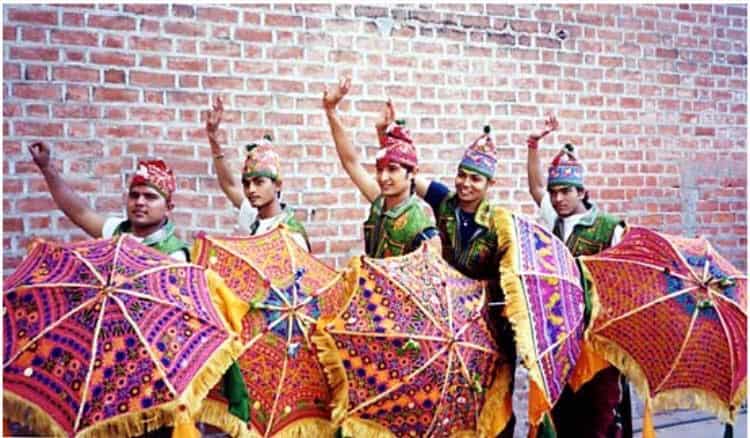
Although Ghoomar is more commonly associated with Rajasthan, it is also popular in Gujarat. The dance involves graceful spinning movements, and the dancers often wear vibrant, swirling skirts. It is performed during various festivals and celebrations, adding a touch of elegance and tradition to the occasion.
Mer Dance
- Traditional dance of the Mer community.
- Coordinated steps in a circle.
- Celebrates cultural heritage and unity.
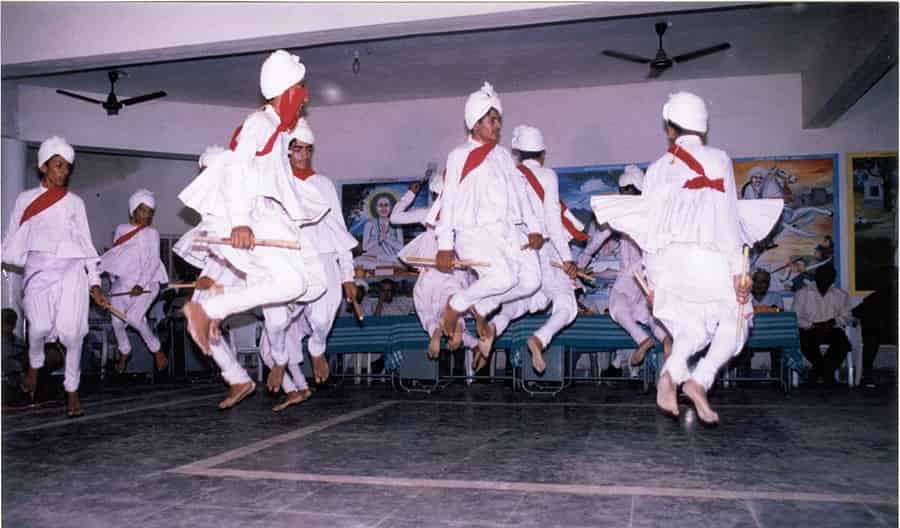
Mer Dance is a traditional dance form of the Mer community in Gujarat. Men and women come together to form a circle, executing coordinated steps to traditional tunes. The dance is a celebration of their cultural heritage and traditions, fostering a sense of unity and cultural pride within the community.
Garba of the Kathiawad Region
- Distinct regional variation of Garba.
- Characterized by intricate footwork.
- Showcases cultural diversity in Gujarat.
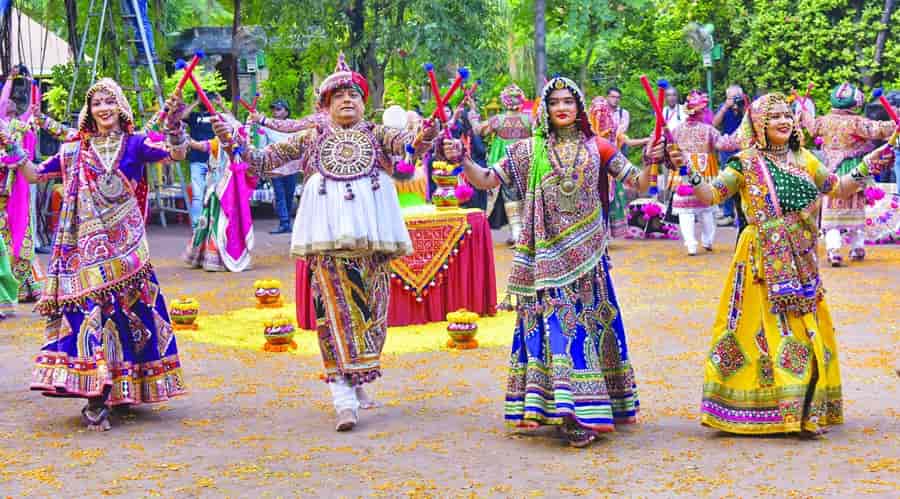
The Garba of the Kathiawad region is marked by its distinct style, characterized by intricate footwork and vibrant costumes. This regional variation adds nuance and diversity to the traditional Garba dance, showcasing the rich cultural tapestry of Gujarat.
Limbdi Dance
- Folk dance from Saurashtra.
- Women balance matkas on their heads.
- Highlights rural traditions and community celebrations.
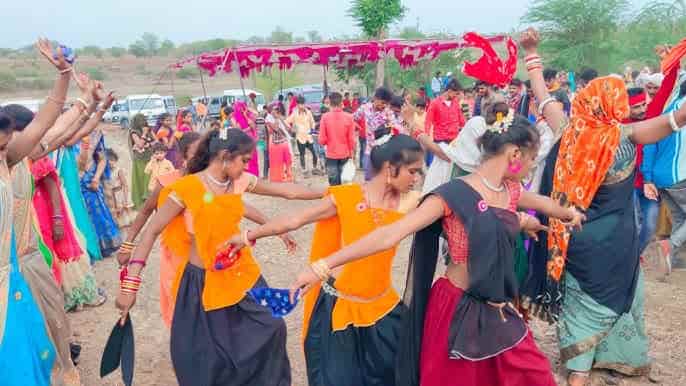
Limbdi Dance is a popular folk dance in the Saurashtra region. Women dance gracefully in a circle, balancing matkas (earthen pots) on their heads. This dance highlights the importance of rural traditions and community celebrations, providing a window into the heart of Saurashtra’s culture.
In conclusion, Gujarat’s dance forms are a testament to the state’s rich cultural diversity and heritage. From the iconic Garba to the expressive Hudo and the traditional Matki dance, each dance form embodies the spirit and traditions of Gujarat. These dances not only bring joy and celebration but also serve as a cultural bridge, connecting people through the language of movement and music.
FAQs
Q-1: Are these dances performed throughout the year, or are they specific to certain festivals?
Ans: While some dances like Garba and Raas are primarily associated with Navratri, others, like Hudo and Bhavai, can be performed on various occasions and festivals.
Q-2: What is the significance of the colorful attire worn during these dances?
Ans: The vibrant attire adds to the festive and celebratory atmosphere, and it often reflects the cultural traditions of Gujarat.
Q-3: Are these dances open to everyone, or do you need to be a professional dancer to participate?
Ans: These dances are open to everyone, and participation is encouraged. You don’t need to be a professional dancer to join the fun.
Q-4: Can tourists and visitors participate in these dances during festivals like Navratri?
Ans: Absolutely! Gujarat welcomes tourists to join in the celebrations during festivals, making it a unique cultural experience.
Q-5: How can one learn these traditional dances if they are interested?
Ans: You can find dance classes and workshops that offer training in these traditional Gujarati dances, making it accessible for those who want to learn and appreciate this art form.
Suggested to Read:

